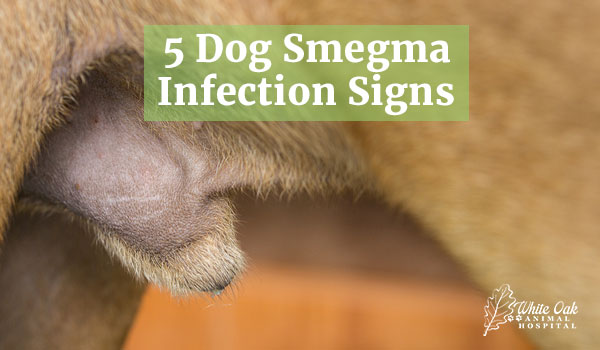
Dog smegma infection is a condition that every pet owner should be aware of due to its potential impact on a dog’s health. While it may seem like a minor issue, untreated dog smegma infections can lead to significant discomfort and more serious health problems. Understanding dog smegma infection symptoms is crucial for early detection and treatment, ensuring your pet’s well-being. In this article, we will explore the key dog smegma infection symptoms that every owner must recognize, providing you with the knowledge to identify and address this condition promptly.
 Understanding Dog Smegma Infection
Understanding Dog Smegma Infection
Dog smegma infection occurs when the natural secretions around the genital area become infected, leading to various symptoms. This condition can arise due to poor hygiene, underlying health issues, or bacterial contamination. While smegma is a normal bodily secretion, an infection can develop when bacteria multiply excessively in this area. Recognizing dog smegma infection symptoms is essential for preventing the condition from worsening and ensuring that your dog receives the appropriate care. We will delve into this infection’s primary causes and contributing factors to provide a comprehensive understanding.
The Importance of Early Detection
Early detection of dog smegma infection symptoms is vital for effective treatment. Ignoring these symptoms can lead to severe discomfort for your dog and may result in more serious health complications. By recognizing the signs early, you can seek veterinary care promptly, preventing the infection from spreading or becoming more difficult to treat. In the following sections, we will discuss the key symptoms that can help you identify a dog smegma infection, emphasizing the importance of staying vigilant for any changes in your pet’s behavior or physical condition.
Identifying Dog Smegma Infection Symptoms
 The most frequently observed dog smegma infection symptoms include excessive genital discharge, persistent irritation, and a foul odor. These symptoms are often the first indicators that something is wrong and should not be ignored. Pet owners should be aware of these signs as they are typically the most apparent and can lead to early diagnosis and treatment.
The most frequently observed dog smegma infection symptoms include excessive genital discharge, persistent irritation, and a foul odor. These symptoms are often the first indicators that something is wrong and should not be ignored. Pet owners should be aware of these signs as they are typically the most apparent and can lead to early diagnosis and treatment.
In addition to the common symptoms, there are less common but equally important dog smegma infection symptoms to watch for. These include difficulty urinating and swelling or redness in the genital area. While these symptoms may not always be immediately associated with a smegma infection, they can signal a more advanced or severe condition that requires urgent attention.
 Excessive Genital Discharge
Excessive Genital Discharge
One of the most noticeable dog smegma infection symptoms is excessive genital discharge. This discharge may appear yellow or green and can be accompanied by a foul odor. While some discharge is normal, an increase in quantity or a color change can indicate an infection. It is important to monitor your dog’s genital area regularly and consult a veterinarian if you notice any unusual discharge. This symptom can be an early warning sign of a developing infection and should not be overlooked.
Persistent Genital Irritation
Persistent genital irritation is another key dog smegma infection symptom. Dogs may lick or scratch the area excessively, indicating discomfort or pain. This behavior can lead to further complications, such as sores or secondary infections. If your dog exhibits persistent irritation, it is crucial to seek veterinary advice to determine the underlying cause and begin appropriate treatment. Ignoring this symptom can lead to a worsening of the infection and prolonged discomfort for your pet.
Foul Odor
A foul odor emanating from your dog’s genital area is one of the most telling dog smegma infection symptoms. This smell is often strong and unpleasant, differing from the typical scent associated with normal genital secretions. The presence of a foul odor typically indicates bacterial growth and infection. If you detect this symptom, it is essential to consult a veterinarian to address the infection before it spreads or causes additional health issues.
 Difficulty Urinating
Difficulty Urinating
Difficulty urinating is a less common but serious dog smegma infection symptom. This may manifest as straining, discomfort, or a noticeable decrease in the frequency of urination. Difficulty urinating can indicate that the infection has progressed, leading to inflammation or obstruction in the urinary tract. Immediate veterinary attention is necessary if you observe this symptom, as it can quickly escalate into a more severe condition requiring urgent care.
Swelling or Redness
Swelling or redness in the genital area is another significant dog smegma infection symptom. This can be a sign of inflammation caused by the infection and may be accompanied by pain or tenderness. Swelling or redness should not be ignored, as it often indicates that the infection is spreading or becoming more severe. Prompt treatment is essential to prevent further complications and ensure your dog’s comfort and health.
Seeking Veterinary Care
If any of these dog smegma infection symptoms are observed, it is imperative to seek veterinary care immediately. Early intervention can prevent the infection from worsening and ensure a quicker recovery for your dog. A veterinarian can provide a proper diagnosis and recommend the appropriate treatment, which may include antibiotics or other medications. Regular check-ups and hygiene maintenance can also help prevent future occurrences of smegma infections. Ensuring that your dog receives timely and effective care is key to maintaining their overall health and well-being.
 Dog smegma infections, though often overlooked, can lead to significant health issues if left untreated. Recognizing the dog smegma infection symptoms discussed in this article is crucial for early detection and prompt treatment. By staying vigilant and consulting with a veterinarian at the first sign of trouble, you can help ensure your dog’s health and happiness.
Dog smegma infections, though often overlooked, can lead to significant health issues if left untreated. Recognizing the dog smegma infection symptoms discussed in this article is crucial for early detection and prompt treatment. By staying vigilant and consulting with a veterinarian at the first sign of trouble, you can help ensure your dog’s health and happiness.
White Oak Animal Hospital offers specialized care options that are not available elsewhere, including integrative treatments and TCVM Telemedicine consultations. With over 28 years of experience, they are well equipped to address your dog’s health needs, including managing smegma infections. Don’t hesitate to contact them if you notice any of the symptoms mentioned above.
Frequently Asked Questions
What causes dog smegma infection symptoms?
Dog smegma infection symptoms are caused by bacterial overgrowth in the genital area, often due to poor hygiene or an underlying health condition. Regular cleaning and monitoring can help prevent these infections.
How can I prevent dog smegma infection symptoms?
Preventing dog smegma infection symptoms involves maintaining good hygiene, providing a balanced diet, and ensuring regular veterinary check-ups. These measures help keep your dog’s genital area clean and healthy, reducing the risk of infection.
Are dog smegma infection symptoms serious?
Yes, dog smegma infection symptoms can become serious if left untreated. They can lead to significant discomfort and more severe health issues, including urinary tract infections and other complications. Early detection and treatment are essential.
Related Posts
-
5 Signs of Dog Cancer: Spotting Symptoms and Debunking Myths and Misconceptions
Dog cancer is, unfortunately, a prevalent concern among canine companions. It affects a significant number…
-
5 Common Symptoms of Dog Kidney Stones Every Owner Should Know
Dog kidney stones, or renal calculi, are a common concern among pet owners. These small,…
-
Effective Relief For Allergic Dog Symptoms
An allergic dog is easy to spot! Sure, all dogs itch and scratch, but you…
-
Top 5 Signs Your Dog May Have a Dog Torn Knee Ligament: Stay Alert
Recognizing the signs of a dog torn knee ligament is paramount for pet owners.…









